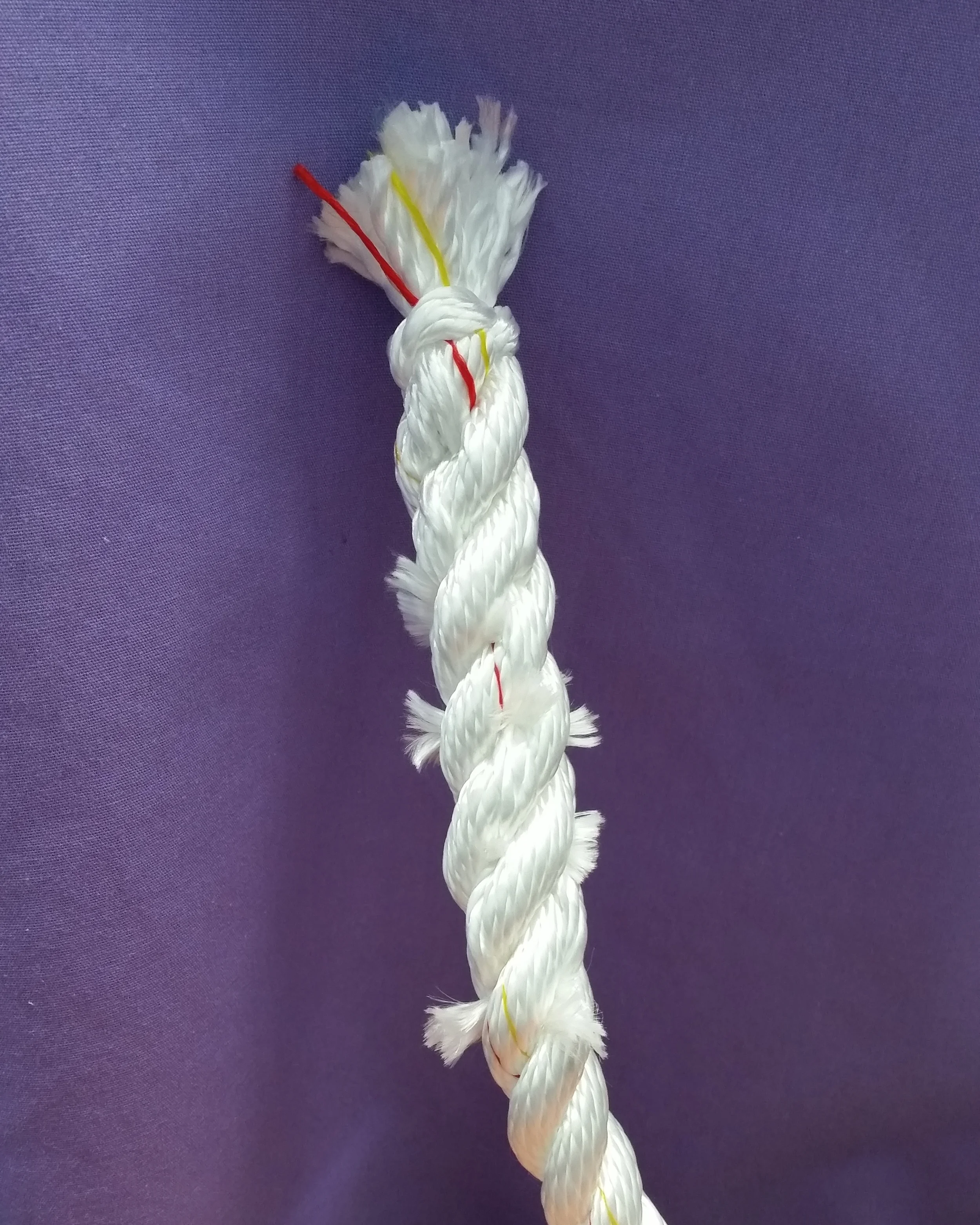The inner core is the working part of the fender. This is where the bulk exists to protect the hull from damage. It needs to be soft to absorb impacts, yet firm to retain its shape.
Rope Fenders typically use a plastic fender covered in a rope mesh (which is cheating) or tightly wrapped rope. Plastic cores have all the drawbacks of plastic fenders, they simply look nautical. Tightly wrapped cores are much too heavy for Maddie to manage, making them difficult for us to use regularly, so I had to come up with other options.
I came up with an open structure which will provide bulk while still having a lot of dead air space (which has no weight to it), allows the fender to still be soft and flexible, and bulky enough to provide protection to the hull and topsides.
The whole process began by preparing the main line of the fender. The ends of the lines were backspliced using the Tree Surgeons Back Splice with fuzzy ends. This backsplice will hold the line together well while being used and abused. There is no risk of the ends unraveling as the line is pulled through the toe rail or stepped on, and the fuzzy ends pose no threat to anything on board since they are soft and fuzzy.
The line selected is 1/2" Three Strand Nylon from New England Ropes. This line will have the fender seized to it, and then run out into the whips that will be used to tie the fender to the boat. I chose Three Strand Nylon because it can be repaired over the years. If a strand or two gets damaged, I can splice in a new strand rather than trying to replace the line that the fender is seized onto.
In 2013, I replaced the running rigging and kept the old lines coiled up in a locker for 2 years. I think this is a wonderful way to put the old sheets and halyards to use again. They will make up the bulk of the fenders in the non load bearing areas. The old line was cut into even lengths and then seized to the fender line.
I used double constrictor knots to seize the old lines to the new fender line. This knot will bind them all together so tightly that there is no risk of them slipping out.
I repeated this on all four fenders before proceeding to the next step.
The next layer added to the fenders is a coiled line that wraps over the first four lines. This coiled layer will provide a lot of bulk while riding over the underlying lines and provide the dead airspace needed to increase the bulk while keeping weight down to a minimum. This once again was repeated on all four fenders.
I did this part of the project while I was between patients at my dental office. I then continued the project once I was back home on board Wisdom.
The first layer was completed, and so it was time to apply the second layer of bulk. Once again, lengthwise lines were run and seized at the ends using Double Constrictor Knots. This bulks up the fender and provides the framework for the next coiled line.
To keep the lengthwise lines in place, I tied them together the way I suture long cuts of tissue, using the "Continuous Locking Technique". It's begins by tying a knot at one end, and then looping the line around the bundle, back through the loop and then onward. This technique provides a tight bind to the bundle without pulling it in any direction.
Once the bundle is tied together, the next layer of coiled line can be installed.
You can see how just one additional wrapping will greatly increase the bulk of the fender and all the dead air space will keep weight down. I do not suggest wrapping the layers in tape as that will only trap water inside and never allow the fender to properly dry out. They will get wet, and the open internal structure will help them dry out.
Be sure that the coils wrap in opposite directions, this will avoid the possibility of the coils falling into each others grooves, instead they will always intersect and ride over one another, keeping a greater volume with the same mass.
It is impressive the amount of volume that it gained by simply adding one more layer of lengthwise lines and a coil. The fender on the left only has 1 layer, the fender on the right has 2 layers.
This was repeated on all four fenders. As you can see Morty in the corner, it was late and I went to sleep at this point.

















